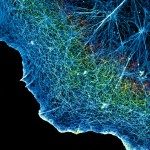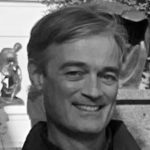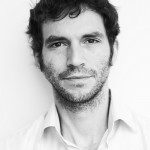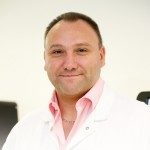Link to Pubmed [PMID] – 22940469
Curr. Biol. 2012 Oct;22(20):1881-90
BACKGROUND: Despite the absence of internal membranes, the nucleus of eukaryotic cells is spatially organized, with chromosomes and individual loci occupying dynamic, but nonrandom, spatial positions relative to nuclear landmarks and to each other. These positional preferences correlate with gene expression and DNA repair, recombination, and replication. Yet the principles that govern nuclear organization remain poorly understood and detailed predictive models are lacking.
RESULTS: We present a computational model of dynamic chromosome configurations in the interphase yeast nucleus that is based on first principles and is able to statistically predict the positioning of any locus in nuclear space. Despite its simplicity, the model agrees with extensive previous and new measurements on locus positioning and with genome-wide DNA contact frequencies. Notably, our model recapitulates the position and morphology of the nucleolus, the observed variations in locus positions, and variations in contact frequencies within and across chromosomes, as well as subchromosomal contact features. The model is also able to correctly predict nuclear reorganization accompanying a reduction in ribosomal DNA transcription, and sites of chromosomal rearrangements tend to occur where the model predicted high contact frequencies.
CONCLUSIONS: Our results suggest that large-scale yeast nuclear architecture can be largely understood as a consequence of generic properties of crowded polymers rather than of specific DNA-binding factors and that configurations of chromosomes and DNA contacts are dictated mainly by genomic location and chromosome lengths. Our model provides a quantitative framework to understand and predict large-scale spatial genome organization and its interplay with functional processes.





